How HAWKED Evolves Extraction Shooters with Treasure Hunts and Puzzles
This story is about the work that went on behind-the-scenes, learning from feedback, and adapting to create a game that pushes the genre in a new direction.
February 8, 2024

When we created HAWKED we were stepping into a competitive landscape, but we had the goal of standing out by mixing shooter mechanics with puzzles and treasure hunts. The journey from initial idea to finished game was driven by an ambition to offer something beyond typical combat gameplay – with the addition of intellectual challenges and exploration.
Hello from MY.GAMES! We’re Executive Producer Andrew Duthie, Creative Director Dmitry Tabakov and Brand Manager Pawel Masny, and in this article, we’ll discuss the process of developing HAWKED, including the challenges faced and the decisions made to bring a new kind of gaming experience to life. This story is about the work that went on behind-the-scenes, learning from feedback, and adapting to create a game that pushes the genre in a new direction.
Finding a unique idea
From the very beginning, our team had quite a lot of creative flexibility; the initial requirement for the product was creating a free-to-play GaaS (game as a service) shooter that encompassed a ton of various gameplay options. So, four years ago, we started to brainstorm different ideas, prototype them very quickly, consider their pros and cons, then push forward with what worked – at this point, the game was like something in the survival genre, a cooperative PvE.
After a few iterations, we realized that, considering all the things that we were doing and the market situation, there were three core ideas that we always tried to move forward with.
The first of these was having an expedition experience. Players like having a route from point A to point B and collecting something. The second concept was creating an accessible and casual product, rather than something hardcore that would require a lot of complex skills from gamers; the game experience should bring a lot of fun and joy with it. Third, we always tried to make something flashy, fun, cool, and exciting.
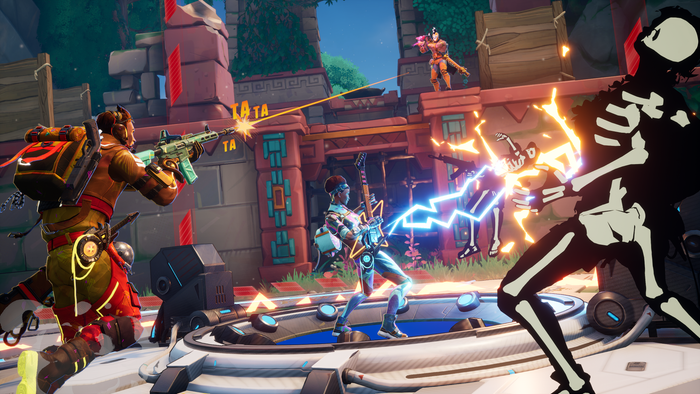
Then, there was this sort of “aha-moment” where something clicked in our minds and we thought: “Oh, this feels like some kind of competitive treasure hunting game”. Further, upon analyzing the market, we realized that, in this case, we were also creating something new because there are no multiplayer treasure hunting games. We were entering a genre that could potentially be very popular in a few years.
From this point onward, we had a new take: HAWKED wouldn’t be about some grumpy military guys going around in a wasteland, it would be about treasure hunting, with a comic style, not too serious, alongside fun and exciting characters. We’d probably say that making this decision was the real starting point of the project.
How we identified the target audience
Audience profiling was very much the subject of heated discussion between several different parties: producers, brand managers, and developers. And, a game always starts with some sort of a vision which also includes a player profile for the ideal player. So, we started with the idea that the game was going to appeal to younger audiences, maybe even teenagers.
This means the game would have a very easygoing tone and the same art style, taking a lot of inspiration from comic books. In general, this lighthearted tone was intended to help us to get our target players on board. That said, as we went through multiple audience research studies, and then the life test of the game, we actually learned something: this wasn’t the case. Instead, the game was resonating better with all audiences other than teenagers, including on the CTR test.
In fact, that research taught us a major lesson on how to readjust our target audience, especially in terms of age: we want to reach out to people who enjoy playing with their friends, enjoy interacting, cooperating, and working together to compete with our players – this is the ideal player profile for us.
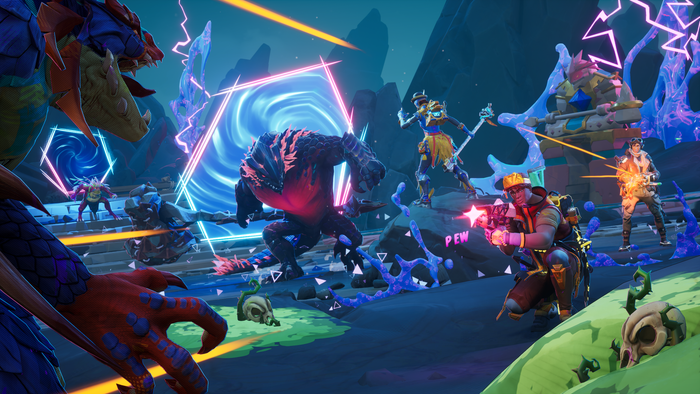
The game is supposed to be approachable and easy to get started with, yet difficult to master. There are a vast amount of ways to play the game or build your character. This is how we wanted to open up the game to more competitive players – those who will play the game, not just to have fun, but to also feel like they’re progressing and winning.
Of course, we’re also looking for a second audience, and wanted to get social gamers on board. These players are interested in enjoying the game with their friends, and they don’t have to always win; for them, having fun is enough – and our game provides this!
The core conceptual pillars of HAWKED
There are a few key features that have shaped our vision of HAWKED. We were considering a very uncompetitive niche with a potentially huge audience which likes a casual and friendly extraction shooter experience. No one had done this in that way, and this meant that we could definitely attract a lot of gamers and retain them without having to fight with many competitors. To illustrate, at that time, the battle royale genre was oversaturated with a number of huge projects that had a lot of marketing power behind them.
Games in the extraction shooter genre still have a high threshold of entry, and they are geared towards more mature and demanding players. Nevertheless, we wanted to make HAWKED friendly for more casual players, while still retaining the core features of the genre.

The game’s most significant conceptual pillar is the concept of competitive treasure hunting, more specifically, it’s a multiplayer PvP shooter with all the treasure hunting feelings and tropes baked right in:
There is cool treasure players can get by undertaking a sort of trial; there is both this element of searching for it and then actually opening it.
Puzzles like doors requiring players to shoot specific crystals in sequence, puzzles where they have to match patterns, and so on – all the stuff you’d see in Uncharted or Tomb Raider.
Traps that can be used both against monsters and other players, and which also serve as obstacles. For example, a player could launch a rotating blade strip that would mow down enemy players. There are also ciphers where you collect mystical glyphs that actually empower you.
The element of using the environment to your advantage; there are a lot of places to use zip lines, slides, and so on.
Another important distinguishing feature was the comic style. From the beginning of the development process, we wanted to make our art direction differ from Fortnite, and indeed, we managed to find our own style.
Another characteristic which we’d like to highlight is that for a session-based shooter, we have a relatively unique approach in terms of evolving the game’s lore. Most games have a sandbox with some narrative elements, but this all basically follows a very episodic format with no central characters, and so on. In our game, players immediately come to a hideout where you can interact with characters, engage with mini-games, and walk around and explore. Moreover, there is a storyline quest to complete within a game session, and this actually propels the storyline forward.
Creating the concept
Our initial team was very small, with less than 20 people, and we quickly prototyped the product and tested out different ideas. The overall prototyping and research phase took about one year and a half in total. When we got the prototype, we tested it internally and received very good feedback – people liked the dynamic gunplay with a relatively mid-core TTK.
When creating the vertical slice, we decided to make not one, but two maps at once: a large one, to showcase the scale of the game and the “big” game mode with realistic distances of travel, and a small map which was designed to showcase the gunplay, game mechanics and art in better quality than the larger map.
Next, we entered the production phase and our core goal was to make the quality of this small map, but spread across a large map, and to finalize the gameplay in terms of meta progression and game mode balance.
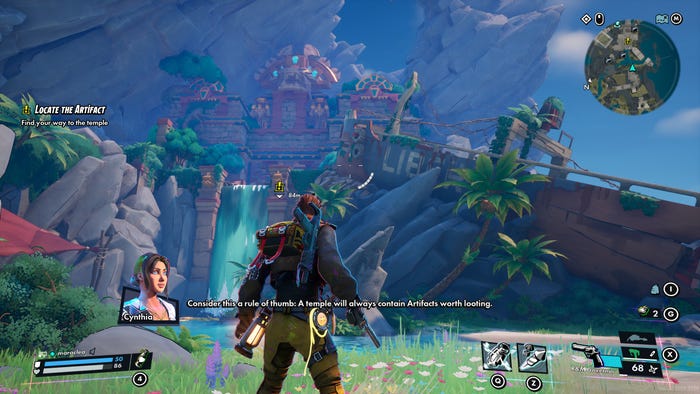
After that, we went into full-stack production with a lot of content. This was the point where we had tons of game features, elements, and other things that needed to be created. The idea was to produce a lot of content – we needed to fill up the game with “gameplay meat” compared to the skeleton we had previously built throughout the vertical slice.
Before our first alpha test closed, we took a look at all features, did a lot of specific gameplay checks and cut some of them. For this, we assembled a team of leads, playing through every new feature, making changes, and aligning every aspect of the game.
This phase allowed us to make the first, good playable version of the game that we could show to players. Then, we switched the pipeline and started to develop a player-facing version.
It took us hours to go through the feedback that players gave us, whether from MY.GAMES playtesters, or real gamers under NDA. There were a lot of meetings with our designers analyzing what went well or wrong. Every week we corrected our next milestone plans, pushed forward, and then rapidly checked whether we had addressed all of the player feedback.
Next, iterations, iterations, iterations – all of these iterations helped us develop the game experience and stabilize a higher level of quality.
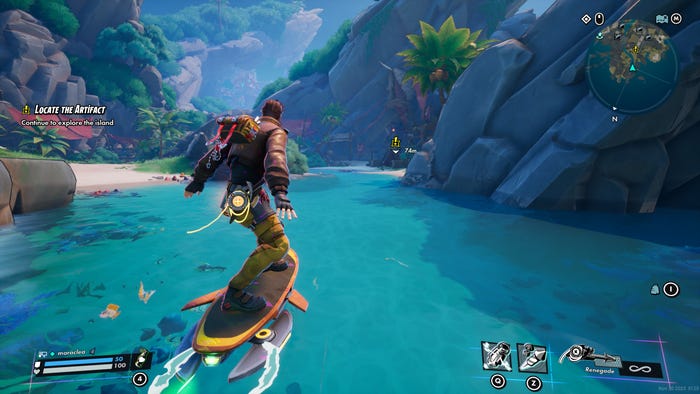
One of the hardest things to execute was the game’s movement system. When we decided to build a game experience as a treasure hunting adventure, when developing a game with a large map, we definitely wanted to meet audience expectations from those who have already played games like Uncharted, Tomb Raider or Apex Legends – and these products have set the bar very high.
Adventure games, in particular, accomplish their level of quality with the help of many years of game development experience behind them. For example, if you take a look at the Uncharted series, you can easily notice how their quality improved with each new release. But we needed to launch something with adventurous and dynamic gameplay from the first iteration. So, we had an immense amount of work to do in terms of animations and maps – designing a smooth experience for gamers at every step, in every location, for every small movement.
This was a time of endless bug fixing, debugging tools, and so on – and we felt that we would never succeed. There were three main decisions that helped us here.
First, we basically established our own level of quality. We assembled a team of animators and created a pure visual of how our character would move in the game. This character movement showcase required some time, but it gave us a profound understanding of what was doable and where we would need to make extra effort.
The second decision was to build a separate team dedicated to working on movement tasks. This team is composed of a cross-disciplinary group of colleagues from fields like programming, animation, combat design, mock-up design, and so on. With this decision, we agreed that making a cool movement system was one of our priorities, and really acknowledged that maintaining the high standards of quality that adventure games have can sometimes take more time.
The third decision is related to game mode balance and map traversal. This is because, on top of moment-to-moment character movement, we needed to make travel from one area to another in the map fun, easy to navigate, and exciting. We decided to do that with many feedback-oriented playtests. It was a challenge to find a good balance between faster or slower game modes, more oriented or less oriented on teamwork, and so on. Here, we always try to go with gamer feedback and create numerous, balanced playtests of the top features from the player standpoint. Thanks to our game community, we got a huge amount of telemetry data, and then we made multiple iterations in the game design.
Learning a lot about HAWKED with playtests
We took a look at playtests in four different ways, because analysis is better when these are performed in tandem.
One of these is having a direct presence with the players, seeing what they’re posting on Discord, even taking part anonymously in their conversations to see what real people feel about the game experience. We did this both with real players and with internal playtests as well.
The second one was conducting different surveys, both in-game and exit surveys, where players were just typing their results into the game.
And the third was having different interviews carried out by the UX Lab, where they conducted deep interviews with our players about how they perceived specific features and content.
The final dimension was analyzing tons of telemetry that players produced, for example, how fast a treasure was opened on average, how many gamers really loved to play in a single match, and how many players ensured more stability in terms of balance and content.
So we went through all four sources of data to understand what players actually feel and what kind of experience satisfies them. Actually, it was quite exciting to witness how players interact with PvE elements, fighting lizards or other monsters.
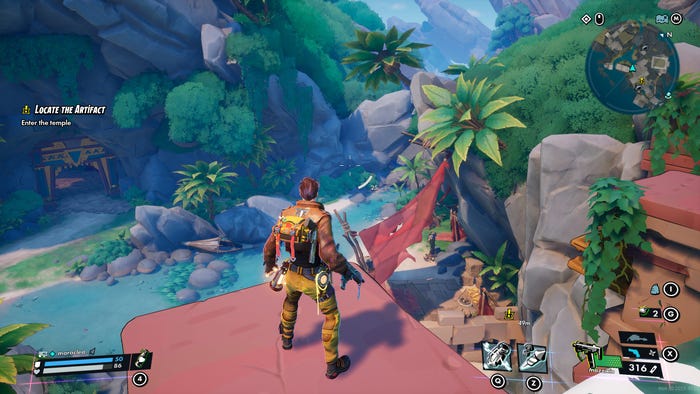
Based on player feedback we improved movement, because this helped us find places where something felt clunky or janky and where you could get stuck – and we were able to make the map way better.
Moreover, we introduced a solo game mode for players, just because we realized that a lot of players really want to play solo. Some of the playtesters wrote articles on how to improve the builds, and we also did a lot of balance changes both on telemetry and on player perception of those features.
Of course, there were some narrative and wording changes. For example, gamers felt that the main character talks too much within a session, so we toned this down and changed the nature of those phrases.
Truly, our game community actually helped us improve game balance, make the gameplay more exciting for different groups of players, and adjust specific features. We had a player who, even in a time-limited OBT, played 500 hours! He then went on to become a community moderator and also provided a lot of awesome feedback.
***
Our journey with HAWKED is far from over. We're setting our sights on extensive plans for new content, aiming to broaden the game's world with more depth, challenges, and stories. Our dedication to the game is unwavering – driven by the opportunity to deliver content that not only enhances but actually transforms the HAWKED experience for our community. Thus, the roadmap ahead is packed with the potential to elevate HAWKED to another level, and we're eager to see where this next phase of development takes us and our players.
Read more about:
BlogsAbout the Author(s)
You May Also Like









